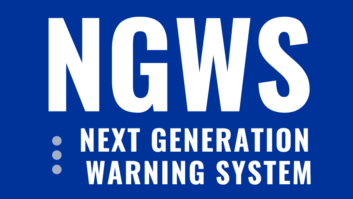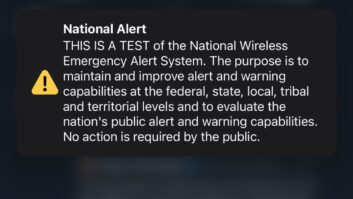FEMA has given those who originate emergency messages (like local government personnel) and software developers more time to make the transition to next-gen EAS.
Those who develop and test software applications designed to be compatible with FEMA’s IPAWS Open Platform for Emergency Networks (OPEN) are getting a break; FEMA announced this week it’s extending how long it’s keeping open its DM-OPEN system.
The federal agency established its IPAWS Open Platform to enable aggregating and routing of IPAWS messages, according to EAS expert Gary Timm on the AWARE blog. Timm is now an alerting and warning expert for the Touchstone Consulting Group. We reported that Timm retired as a broadcast engineer for the Milwaukee, Wis. cluster of Journal Broadcast Group. Timm remains broadcast chair of the Wisconsin EAS Committee and remains involved in the State Amber Alert Committee.
FEMA said in its announcement that dozens of companies are in various stages of developing and testing interoperable software applications compatible with IPAWS-OPEN aggregator for Common Alerting Protocol emergency alert messages. That’s why the government agency is keeping its DM-OPEN system operating until July 31, rather than decommissioning it on June 30 as planned.
FEMA is transitioning from OPEN 1.0 to OPEN 2.0. The IPAWS-OPEN will serve not only as the IPAWS aggregator for CAP emergency alert messages, but also enable the interoperable exchange of other standards-compliant messaging between commercial systems. Timm recommends emergency managers and other alert originators currently using DMIS should act now to secure commercial software having the ability to connect to OPEN 2.0.
And what of the broadcast Sept. 30 deadline for stations to be able to receive and transmit a CAP-EAS message? That remains in place, though we’ll see what happens once the FCC begins to review comments to its open Notice of Proposed Rulemaking on Part 11 rules governing EAS; Comments are due July 20 to Docket 04-296.
— Leslie Stimson
Related:
Radio World’s EAS CAP Page











